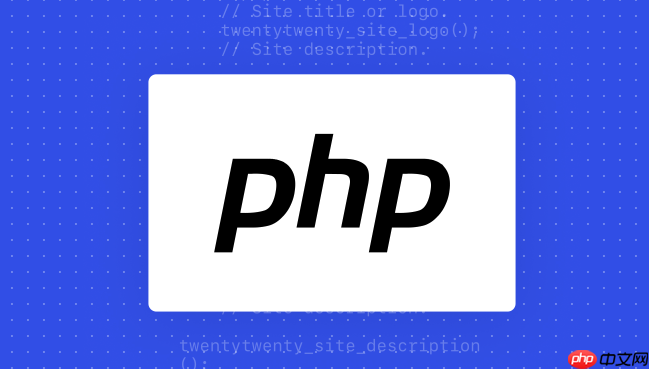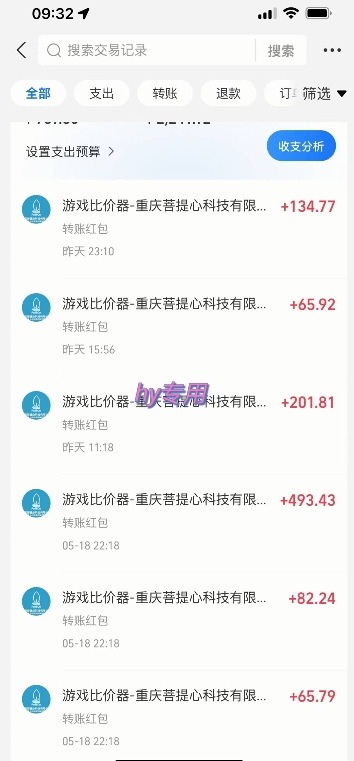php解析命令行參數的核心方法是使用$argv和$argc變量配合getopt()函數,也可借助symfony console組件實現更復雜的功能。1. $argv數組包含所有傳遞給腳本的參數,$argc記錄參數數量;2. getopt()函數支持短選項(-a)和長選項(–option)的解析,例如”getopt(“a:b::c”, [“longopts:”, “anotheropt::”, “thirdopt”])”; 3. 對于更復雜的參數處理,推薦使用symfony console組件,它提供參數驗證、自動生成幫助信息等功能;4. 參數校驗可通過手動檢查或symfony console內置機制實現,如is_numeric($age)判斷;5. symfony console可自動生成幫助信息,執行–help即可查看;6. 在docker容器中運行php命令行腳本時需確保安裝php cli、設置工作目錄、復制腳本、添加執行權限并配置cmd或entrypoint指令。這些方法共同提升了php腳本在命令行環境下的靈活性和實用性。

php解析命令行參數,其實就是讓你的php腳本能夠像其他命令行工具一樣,接收并處理用戶在終端輸入的參數。這樣做能極大地提升腳本的靈活性和自動化程度。

要實現這個目標,PHP提供了一些內置的機制,讓我們能輕松地獲取和解析這些參數。

解決方案
PHP解析命令行參數的核心在于訪問 $argv 和 $argc 這兩個全局變量。$argv 是一個數組,包含了所有傳遞給腳本的參數,而 $argc 則記錄了參數的數量。
立即學習“PHP免費學習筆記(深入)”;

一個簡單的例子:
<?php // 腳本名稱總是 $argv[0] echo "腳本名稱: " . $argv[0] . "n"; // 遍歷所有參數 for ($i = 1; $i < $argc; $i++) { echo "參數 " . $i . ": " . $argv[$i] . "n"; } ?>
如果你保存這段代碼為 test.php,然后在終端執行 php test.php arg1 arg2 arg3,你將會看到類似以下的輸出:
腳本名稱: test.php 參數 1: arg1 參數 2: arg2 參數 3: arg3
但是,僅僅這樣還不夠,我們需要更靈活的方式來處理參數,比如支持短選項(-a)和長選項(–option)。
PHP提供了 getopt() 函數來處理這種情況。getopt() 函數允許你指定腳本支持的選項,并解析命令行參數。
<?php $options = getopt("a:b::c", ["longopts:", "anotheropt::", "thirdopt"]); var_dump($options); ?>
在這個例子中,”a:b::c” 定義了短選項,[“longopts:”, “anotheropt::”, “thirdopt”] 定義了長選項。
- a: 表示選項 a 必須帶一個參數。
- b:: 表示選項 b 可以帶一個參數(可選)。
- c 表示選項 c 不帶參數。
- longopts: 表示長選項 longopts 必須帶一個參數。
- anotheropt:: 表示長選項 anotheropt 可以帶一個參數(可選)。
- thirdopt 表示長選項 thirdopt 不帶參數。
假設你執行 php test.php -a value -b –longopts=longvalue –thirdopt,var_dump($options) 的輸出將會是:
array(4) { ["a"]=> string(5) "value" ["b"]=> bool(false) ["longopts"]=> string(9) "longvalue" ["thirdopt"]=> bool(false) }
getopt() 返回一個關聯數組,其中鍵是選項名,值是選項的值。如果選項沒有值,則值為 false。
如何處理復雜的命令行參數?
對于更復雜的命令行參數處理,可以考慮使用第三方庫,例如 Symfony Console 組件。它提供了更強大的功能,包括參數驗證、自動生成幫助信息等。
安裝 Symfony Console:
composer require symfony/console
一個簡單的 Symfony Console 例子:
<?php require 'vendor/autoload.php'; use SymfonyComponentConsoleApplication; use SymfonyComponentConsoleCommandCommand; use SymfonyComponentConsoleInputInputArgument; use SymfonyComponentConsoleInputInputInterface; use SymfonyComponentConsoleInputInputOption; use SymfonyComponentConsoleOutputOutputInterface; class MyCommand extends Command { protected function configure() { $this ->setName('my:command') ->setDescription('A simple command') ->addArgument('name', InputArgument::REQUIred, 'Who do you want to greet?') ->addOption('greeting', null, InputOption::VALUE_OPTIONAL, 'The greeting to use', 'Hello'); } protected function execute(InputInterface $input, OutputInterface $output) { $name = $input->getArgument('name'); $greeting = $input->getOption('greeting'); $output->writeln($greeting . ', ' . $name . '!'); return 0; } } $application = new Application(); $application->add(new MyCommand()); $application->run();
執行 php test.php my:command John –greeting=”Good morning”,輸出將會是:
Good morning, John!
Symfony Console 提供了更清晰的結構和更豐富的功能,使得處理復雜的命令行參數變得更加容易。
命令行參數解析時如何進行參數校驗?
參數校驗是確保腳本接收到有效數據的關鍵步驟。使用 getopt() 時,校驗需要手動進行。使用 Symfony Console 等庫時,可以利用其內置的校驗機制。
例如,使用 Symfony Console,你可以在 configure() 方法中定義參數的類型和約束,然后在 execute() 方法中檢查參數是否符合要求。
<?php // ... (之前的代碼) use SymfonyComponentConsoleExceptionInvalidArgumentException; class MyCommand extends Command { protected function configure() { $this ->setName('my:command') ->setDescription('A command that requires a positive integer as argument') ->addArgument('age', InputArgument::REQUIRED, 'Your age') ->addOption('adult', null, InputOption::VALUE_NONE, 'Check if you are an adult'); } protected function execute(InputInterface $input, OutputInterface $output) { $age = $input->getArgument('age'); if (!is_numeric($age) || $age <= 0) { throw new InvalidArgumentException('Age must be a positive integer.'); } if ($input->getOption('adult') && $age < 18) { $output->writeln('You are not an adult.'); } else { $output->writeln('You are an adult.'); } return 0; } } // ... (之前的代碼)
在這個例子中,我們檢查 age 參數是否為正整數。如果不是,則拋出一個 InvalidArgumentException 異常。
如何生成命令行腳本的幫助信息?
清晰的幫助信息對于用戶來說至關重要。getopt() 函數本身不提供自動生成幫助信息的功能,你需要手動編寫。而 Symfony Console 可以自動生成幫助信息。
使用 Symfony Console,只需要在 configure() 方法中設置命令的名稱、描述、參數和選項,然后 Symfony Console 就可以自動生成幫助信息。
執行 php test.php my:command –help,Symfony Console 會自動生成類似以下的幫助信息:
Usage: my:command [options] <name> Arguments: name Who do you want to greet? Options: --greeting=GREETING The greeting to use (default: "Hello") --help (-h) Display this help message --quiet (-q) Do not output any message --verbose (-v|vv|vvv) Increase the verbosity of messages: 1 for normal output, 2 for more verbose output and 3 for debug --version (-V) Display this application version --ansi Force ANSI output --no-ansi Disable ANSI output --no-interaction (-n) Do not ask any interactive question Help: A simple command
在docker容器中運行PHP命令行腳本的注意事項
在 Docker 容器中運行 PHP 命令行腳本時,需要注意以下幾點:
-
確保 PHP CLI 已安裝: 你的 Docker 鏡像需要安裝 PHP CLI。通常,你可以使用 apt-get install php-cli 或類似的命令來安裝。
-
設置工作目錄: 使用 WORKDIR 指令設置腳本的工作目錄。
-
復制腳本: 使用 copy 指令將腳本復制到容器中。
-
設置執行權限: 如果腳本需要執行權限,可以使用 chmod +x 命令。
-
運行腳本: 使用 CMD 或 ENTRYPOINT 指令來運行腳本。
一個簡單的 Dockerfile 例子:
FROM php:7.4-cli WORKDIR /app COPY . /app RUN chmod +x test.php CMD ["php", "test.php", "arg1", "arg2"]
這個 Dockerfile 首先基于 PHP 7.4 CLI 鏡像,然后設置工作目錄為 /app,復制當前目錄下的所有文件到 /app,給 test.php 添加執行權限,最后使用 CMD 指令來運行腳本,并傳遞了兩個參數 arg1 和 arg2。
總而言之,PHP解析命令行參數是提升腳本靈活性的重要手段。無論是使用內置的 getopt() 函數,還是借助 Symfony Console 這樣的第三方庫,都能讓你輕松地構建強大的命令行工具。



















